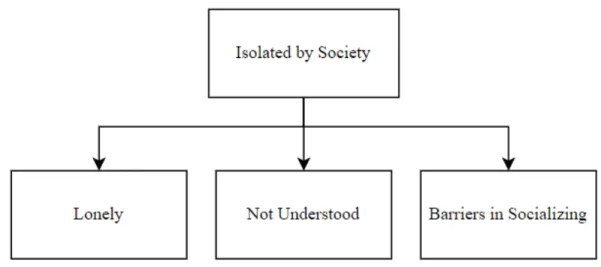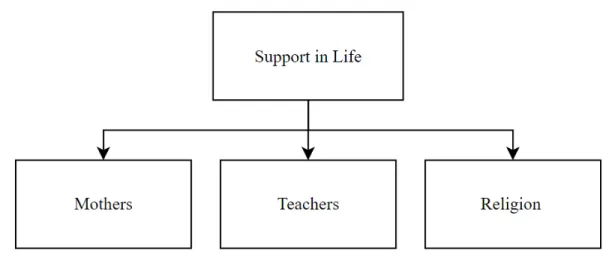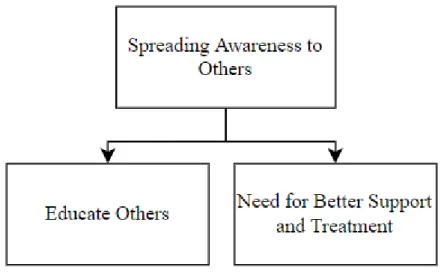This research project has been submitted in partial fulfillment of the requirements for the Bachelor of Social Sciences (Hons) Psychology, Faculty of Arts and Social Sciences, Universiti Tunku Abdul Rahman. A substantial part of our study would not have been accomplished nor realized in terms of participation and understanding of ASD as a whole if it were not for such individuals and organizations who have given us their cooperation. This research paper attached here titled "Exploring Societal Attitudes towards Asd and Its Impact on the Quality of Life of Individuals with Asd in Malaysia" prepared and presented by Belle Kor Ming Hui, Chua Hui Qin and Imran bin Mohammad Azlan at partial fulfillment of the Requirements for the Bachelor of Social Sciences (Hons) Psychology are hereby accepted.
Problems such as isolation, stigmatization and unemployment have complicated the quality of life (QoL) of those with Autism Spectrum Disorder (ASD); these problems are related to society's perception of ASD individuals. The research implication can expand the knowledge of ASD and provide material to disseminate accurate information about ASD. However, caution is needed as the narrow demographics of sample population, homogeneity of ASD functional level and single source perspective limit the research.
In conclusion, we can say that there is an impact of societal views on ASD on the treatment of ASD, such as isolation and a poor quality of life. As positive as dealing with these issues has been, it has implications to help spread ASD knowledge and fill research gaps.
Introduction
This generally has a negative impact on ASD and generally hinders awareness of ASD in Malaysian society. However, there has been improvement as seen by Chu et al., (2021) to increase awareness of ASD in Malaysia. Surprisingly, based on Shattuck et al. 2012), the employment rate of ASD groups is even lower than that of those who are.
To explore the social experience and challenges of ASD individuals from the perspective of those living with autism in Malaysia. What is the impact of local societal views on the quality of life of ASD individuals in Malaysia. Additionally, we will be able to provide a more accurate media portrayal of ASD individuals, significantly shaping our view of the ASD group (Low et al., 2021).
By exploring the social experience and challenges of ASD individuals through interviews, we would be able to get a raw,.
Literature Review
Specifically, they appear to have a significant impact on individuals with ASD as they are related to parenting style and treatment received (Ravindran & Myers, 2012; Stahmer et al., 2011). The negative aspect is that siblings reportedly had problems with their sibling's aggressive outbursts with ASD (Mascha & Boucher, 2006) and were embarrassed by their sibling's condition (Petalas et al., 2012). In a positive light, siblings reported having fun with the behavior of their sibling with ASD (Rivers & Stoneman, 2003) and feeling proud of them (Moss et al., 2019).
Employers' views on ASD. The majority of employers are reluctant to hire people with ASD, mainly because they believe that the costs of hiring them outweigh the benefits (Hernandez et al., 2000). As mentioned in the previous section, people with ASD are more likely to be socially isolated than their peers (Orsmod et al., 2013). Hiding one's own condition, such as ASD, which is common in the community, has done more harm than good for the psychological health of people with ASD (Botha et al., 2020).
The Social Model of Disability (SMOD) values the fact that what society defines as disability is socially constructed (Oliver et al., 2012).
Methodology
Our researchers contacted members of management who recruited participants from within their organization on behalf of the current study. Prior to the data collection process, potential ethical issues were reviewed and approved by relevant committees such as the supervisor of the current study, Universiti Tunku Abdul Rahman (UTAR), Scientific and Ethical Review Committee (SERC). Prior to the start of the survey, written consent must be obtained from the institution(s)/company(s) in which the physical and/or online survey will be conducted.
Consider that public expectations and perceptions have an impact on you. During the interview session, participants were once again asked to consent to the audio recording of the entire interview session and their rights as one. After giving verbal consent, the researchers proceeded to begin recording the sessions and introduced themselves starting with the interview questions.
Credibility. Reliability refers to the accuracy of the researcher's interpretation of the interviewee's responses and perspective (Tobin & Begley, 2004). Credibility. This includes ensuring that the findings of the present study are replicable, if conducted with the same sample population and context (Tobin & Begley, 2004). Transferability. As its name suggests, transferability refers to the generalizability of study findings to future research (Forero et al., 2018).
As the results of the current study are subjective to the participants' personal background, experiences and. Confirm. Confirmation can only be achieved through prior achievement of the above criteria (Lincoln & Guba, 1985). In addition, the researchers' perceptions and their possible personal biases are also explained in the section below.
The researchers' perspectives: researcher 1. Personally, I have not had any relationship with autism in my entire life. The researchers' perspectives: Researcher 2. Before I really started this project, I only have superficial knowledge about people with ASD.
Results
Moreover, the research questions of the present study were answered by the emerging themes. Because of the symptoms and the negative perceptions of ASD, it affects and creates obstacles on how those living with ASD adapt to society. It can be seen because of the expectation and how those living with ASD function differently than those who do not live with ASD, it is difficult to convince and prove to people about the effectiveness and efficiency of their skill.
Many of those with ASD who work may find it difficult to do certain jobs. Barriers in employment. This theme refers to the difficulties that those with ASD face when finding work. One of the participants explained that regardless of the form the recruitment comes from, it is difficult for those with ASD to look for work and it takes effort to be able to find work.
It refers to the difficulties faced by people with ASD in learning at school or university. Many of the problems stem from the fact that teachers don't understand how to accommodate students with ADD, causing their grades to drop due to ignorance. Participants also note the lack of understanding of peers without ADHD to those with ADHD.
Some people with ASD work on themselves as the most effective way to prove themselves to the public. Some participants have difficulty managing their symptoms, but they keep pushing themselves to make progress as they try to move forward. Self-protection. Refers to the way people with ASD try to protect themselves and their rights.
For a few of the participants, they wanted to delve deeper into the specific people and things they wanted to avoid. Some of the participants initially do not understand that some of the difficulties and differences they face are symptoms of ASD, but they eventually come to accept it. One of the participants emphasized being open and accepting in public and in turn creating a positive environment for her and her children with ASD.
School is the place they will be most of the time besides their home.

Discussion
Knowledge and attitudes of early childhood pre-service teachers regarding the inclusion of children with autism spectrum disorder.Journal of Early Childhood Teacher Education. Adult attitudes towards behavior of a six-year-old boy with autism. Journal of Autism and Developmental Disorders. Putting on my best normal”: Social camouflage in adults with autism spectrum conditions. Journal of Autism and Developmental Disorders.
Parents' experiences of employment issues faced by a young adult with autism spectrum disorder (ASD). Malaysian Journal of Medicine and Health Sciences, 17 (SUPP 3), 75–83. Medical students' perception, awareness, social attitude and knowledge about autism spectrum disorder: an exploratory study in Malaysia. Internalizing stigma for parents of children with autism spectrum disorder in Hong Kong. Social science and medicine.
Perspectives of parents on the causes of autism spectrum disorder in their children. Journal of Genetic Counseling The Experience of Isolation and Loneliness in Young Adults with High-Functioning Autism (Dissertation). Aging with autism - the experiences of adult siblings of people with autism. Research in Autism Spectrum Disorders, 63, 42–51. Prevalence, diagnosis, treatment and research of autism spectrum disorders (ASD) in Singapore and Malaysia. International Journal of Special Education, 29, 82-92.
School refusal and bullying in children with autism spectrum disorder. Child and adolescent psychiatry and mental health, 14(1). Social participation among young adults with an autism spectrum disorder. Journal of Autism and Developmental Disorders. Perceptions and experiences of adolescent siblings who have a sibling with autism spectrum disorder. Journal of Intellectual & Developmental Disability.
Support, inclusion and attitudes of special education teachers towards the education of students with autism spectrum disorders. Autism Research and Treatment, 2012, 1–8. Psychosocial functioning and life satisfaction in adults with autism spectrum disorder without intellectual disability. Journal of Clinical Psychology. Teachers' perceptions of how to interact with children with autism spectrum disorders. Journal of Autism and Developmental Disorders.
Public knowledge and stigma of autism spectrum disorder: Comparison of China with the United States. Autism.




